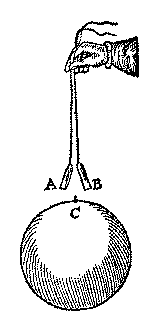Reference




Moonshot's Answer
The versorium, invented by William Gilbert in 1600, had a significant impact on the study of electricity. It was the first instrument capable of detecting static electric charge, marking a pivotal moment in the scientific understanding of electricity. The invention of the versorium allowed for the observation of electrical interactions, which was crucial for early experiments and theories in electricity. It was a simple device consisting of a lightweight needle that would turn when charged objects were brought near, indicating the presence of static electricity. This instrument laid the groundwork for future developments in electrostatic research and the understanding of electrical phenomena. The image below illustrates the basic design of a versorium, showcasing its simplicity and effectiveness in early electrical studies.

The versorium's impact is evident in how it enabled scientists to explore and understand electric forces, which was foundational to the development of the field of electricity. It represented a significant step forward in the scientific method's application to electrical studies, paving the way for more sophisticated instruments and a deeper comprehension of electrical principles.
Follow Up
Related
What role did the versorium play in distinguishing between magnetism and static electricity?
CHAPTER 2 - Literature Review 2.1. Introduction This chapter undertakes a review of literature to
What is the energy mix in Nigeria?
Who are some historical figures important to the development of electrical machines?